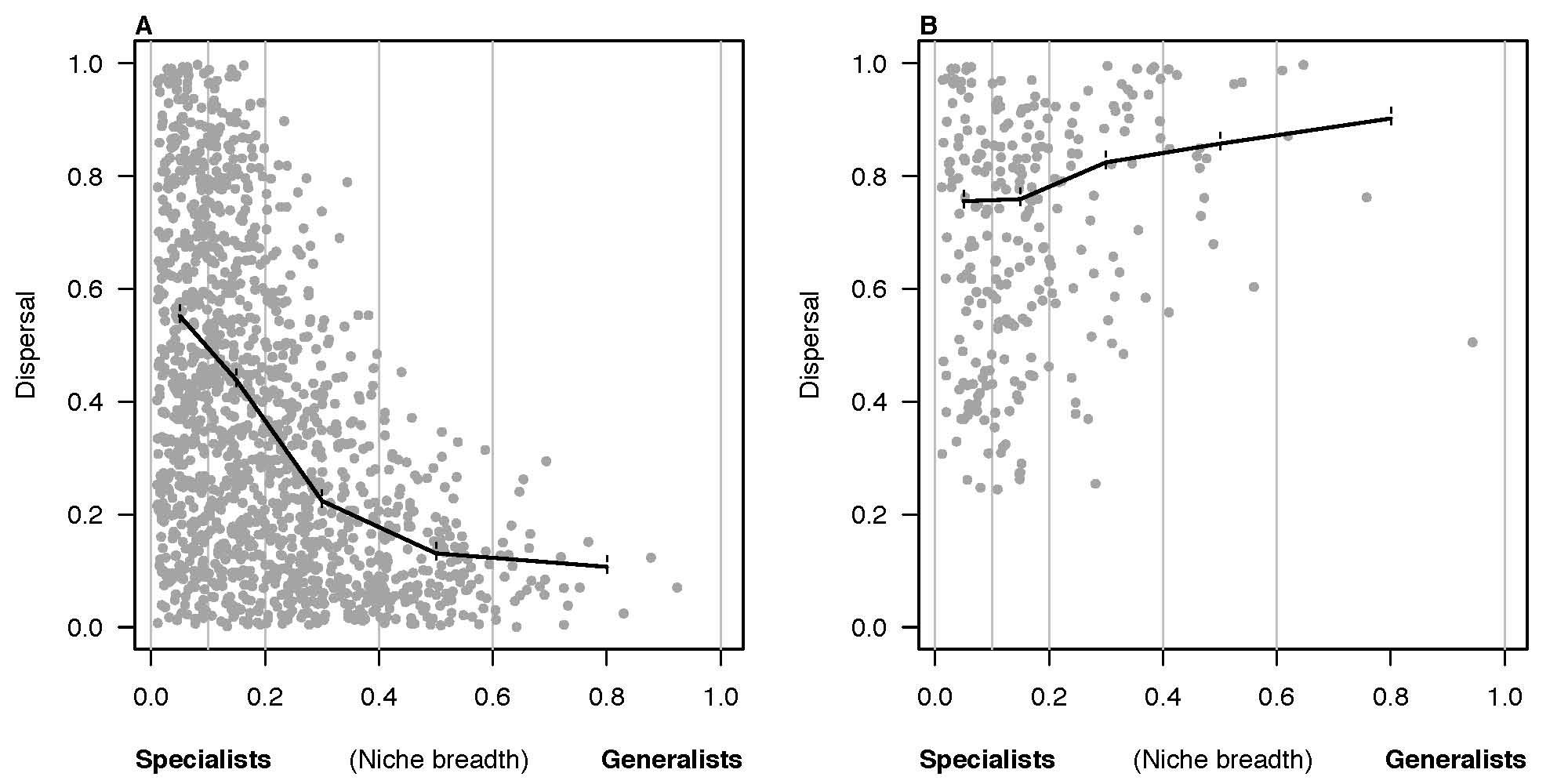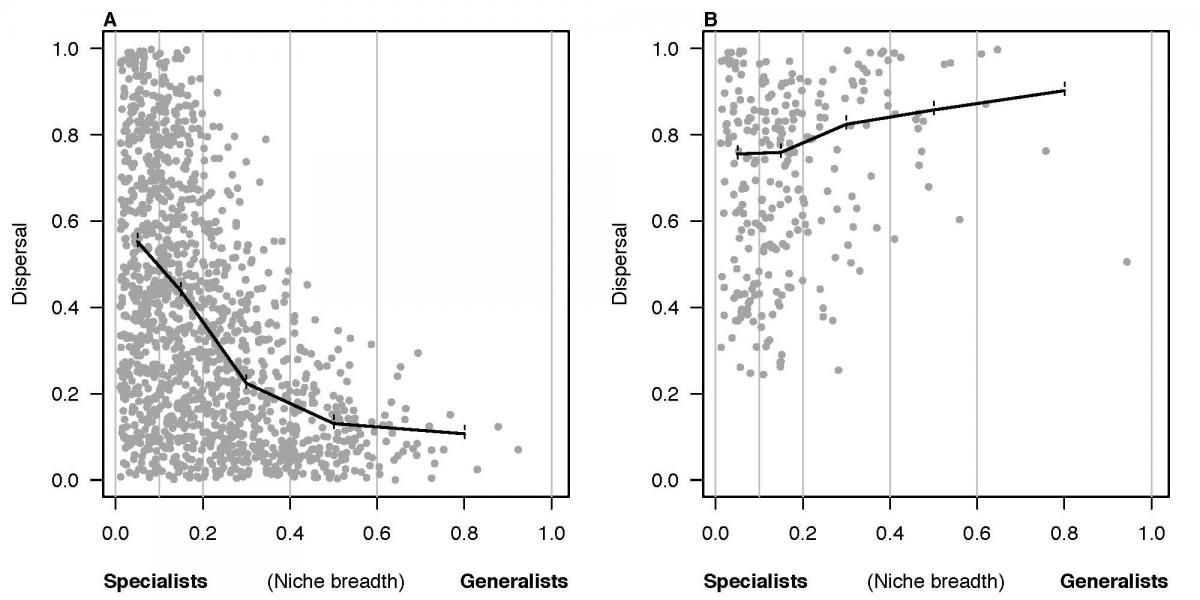Disturbance effects on specialists and generalists
Submitted by editor on 26 January 2016. Get the paper!
Get the paper!In nature, species differ by many characteristics, such as dispersal ability, competitiveness or fecundity, that can be associated one with another. In addition, species can display distinct levels of habitat specialisation. This means that some species (‘specialist species’) have very strong habitat preference and so can live in only very specific habitat conditions. In contrast, some species (‘generalist species’) have broad habitat tolerance, and can survive in a very large range of different conditions. These characteristics are important as they help to understand the success of species in different environments. To better understand the relationship between species traits and specialisation, L. Büchi and S. Vuilleumier have analysed a model that identifies which species traits are associated with species’ habitat specialisation. These trait associations were studied in disturbed and stable environments.
Strong trait associations were found for generalist species, while specialist species exhibited a larger range of possible trait combinations. However, the presence of disturbance in interaction with dispersal limitation modifies those associations and limits the range of possible trait values.
This work demonstrates that habitat specialisation determines the emergence of species’ trait strategies in communities and that the occurrence of environment disturbance modifies the number and forms of possible strategies. This provides critical insights into the composition of communities and the survival probability of species in changing environments. This is particularly important as disturbance are increasingly occurring nowadays in natural ecosystems.

Association between specialisation (niche breadth value) and dispersal ability in A. stable environments, and B. strongly disturbed environments, for perennial species. Each grey dot represent a species. The black line represents the mean dispersal of the species within five categories of specialisation level (from the most specialist species to the most generalist species).